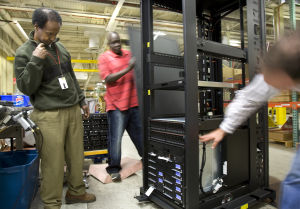All over the world start-up technology companies are toiling away waiting to be recognized and utilized. I sat down with Abhiroop Basu, content strategist at Zopim, which has gotten over early stage hurdles to reach success, and talked about what the challenges a young technology company faces specifically in Southeast Asia.
A little background about Zopim – they are a company focused on helping SMB’s grow customer satisfaction and loyalty through live chat software that makes it easy for a customer to connect with the business. They are headquartered in Singapore and were one of the recipients of the MDA iJAM grant helping them start up.
What are the Singapore-specific or region-specific challenges that Zopim faced?
The seed funding landscape has changed dramatically since Zopim started in 2008. Back then, the funding options were limited. Along with many of our peers, we received the MDA iJAM $55,000 grant. In most cases, this wasn’t quite enough to build out a monetizable viable product. As a result, many of our peers had to offer consulting services to make ends meet. Attempting to build a viable product was already a monumental effort. The odds were bad to begin with. Having the distraction of a consulting business only worsened it.
The founders (Royston, Wenxiang, YB, and Qing Ru) steadfastly refused to entertain consultation projects even when it was lucrative. Huge sacrifices had to be made. For the first two years, they survived on a stipend of $500 per month (which by the way is highly achievable by staying with parents). The pressure of not earning a decent income forced the team to work harder on monetizing our product. In fact, Zopim was down to its last dollar in the bank when it finally moved out from beta and launched pricing in 2010. Because of the two years of continued focus on our product, Zopim achieved profitability within months of launching. Frugality is still a big part of our DNA and we’ve learnt to spend money at the right places. Today, we continue to be profitable and are in the fortunate position to be able to pay & treat our forty employees well while continuing to hire fast.
No local or regional market:
Many US & EU startups are able to leverage the bowling alley strategy by conquering a niche local market that leads them towards the eventual larger market. Facebook started in Harvard before invading other colleges. Countless companies including Twitter, Uber & Airbnb validated their products in the early adopter paradise – San Francisco – before seeking success elsewhere.
A common problem that Southeast Asian startups face is the lack of a viable local market. Even where the local market is large enough or lucrative enough, it’s hard to replicate this success regionally because of the huge language, cultural and behavioral gap between Asian countries.
Our first handful of users were Singaporean companies, like Spahaven, a brick and mortar store with an online presence. Being able to meet face-to-face with such customers during the product-iteration phase was immensely important. This is a hurdle that all startups need to clear.
However, we conscientiously avoided the trap of building a locale-specific product. Instead, we tried to understand their industry-specific needs. By taking that perspective, we were able to build a product that met the needs of the larger industry, regardless of locale.
Ahead of their time:
When the founders started Zopim the interest in customer support software was relatively low in Singapore. Hence, gaining traction proved to be a challenge.
Lack of PR interest:
Being in the relative wilderness of Southeast Asia also meant that we were unable to attract the attention of high profile tech blogs the way that our counterparts in US could (coverage of Asian startups was nowhere near where it is today). Looking at the Google Search Trends graph, even though Zopim beta launched in 2008, around the same time as Olark, another YC-funded competitor, we barely registered in the search radar until 2010. In contrast, other well-funded US-based SaaS companies (like mixpanel, optimizely and unbounce) were able to fly off the blocks with perfectly-timed PR coverage.
However, what we learnt was that the “PR bump” is simply that – a short-lived traffic bump. SaaS businesses rarely explode, it only compounds. We learnt that chasing the ego-boosting tech blog coverage isn’t quite as effective as building out an excellent product. With a razor sharp product focus, we were able to keep churn rates low and add on to our base of raving customers month on month. This is how we’ve grown to become one of the most popular SaaS product in our category with 140,000+ active customers.
What were some of the cultural challenges?
Well meaning but bad advice
This is a sensitive topic obviously. The founders received a wide range of advice, some well-meaning, some demeaning. Some good advice, some bad. Compared to more mature startup ecosystems, this region has a much smaller community of qualified entrepreneurs / mentors who are ‘just ahead’ of us in the curve. These guys are important because they dish out practical advice, or ‘growth hacks’ that are immediately useful given our limited resources.
Early in our lifespan, the founders also met many mentors who were dismissive of Zopim’s business, citing trends and competitors who were not even relevant in our space.
Another big difference was the motivation of mentors here. Many of them expect to be paid retainers by incubators, or given equity in startups. In contrast, there is a pay-it-forward culture in the SF bay area. Many entrepreneurs received advice for free as they grew and paid it forward to younger entrepreneurs when they learnt from their successes / failures.
The team is appreciative of the time that mentors spend with us. But it’s important that we keep in mind that mentors often give advice based on their own experiences. In a different environment, the same formula for success may or may not work. It’s ultimately the responsibility of the founders to decide whether or not to heed the advice. Over time, the team acquired the knack of sieving out good advice that’s applicable to our business.
What are the general challenges that Zopim had to work through to achieve success?
Competing against incumbents: The initial challenge faced by the founders was to convince small to medium sized businesses to use Zopim. With more popular incumbents in the market (e.g. Olark, LivePerson, Live Chat Inc.), they had their work cut out for them.
Viral marketing: Despite the challenges, we found that our product was inherently viral for two reasons:
- the “Zopim” logo visible on all users’ websites
- the uptick in usage by small businesses. Zopim became a de facto customer service solution for smaller businesses who couldn’t afford the steep price of the larger incumbents
Through 2008 and into 2011, our product quality, pricing strategy, and viral marketing efforts lead to us catching up with the market leaders.
Fragmented market: Our target market of online SMBs is notoriously fragmented. There are few verticals Zopim can target with its marketing efforts. Hence, viral growth has been important for some time.
Were there any challenges that impacted specific features of Zopim?
Reinventing live chat: Zopim did not invent the live chat space, but it reinvented how products in this space work. Today, the design and technology advancements pioneered by Zopim, have become established standards in the industry.
The Live Chat industry had not evolved to adapt to web users’ behavior, and were usually difficult to learn and cumbersome for chat agents to use. They were also irritating to web visitors, often taking the form of floating chat invitations that block content or browser pop-ups that makes simultaneous browsing and chatting impossible.
The founders’ original ideas were hard for some customers to accept, but again our pricing strategy and feature set made us an appealing choice for many.
As an example, while all incumbents used a separate popup browser window to host the chat window, the founders pioneered a live chat widget which worked totally within our customers’ websites, and was always displayed prominently on the bottom right of a website. We were also the first in the market to provide a fully web-based application for business owners to serve their customers in real-time. This allowed business owners to get started without having to download any software.
Going forward, we are continually innovating and updating our line of products to meet the evolving demands of SMBs, using the latest technological advances.
What eventually triggered success and what are the future plans for Zopim?
Luck and Grind:
Eventually what led to success for Zopim was more about luck than anything else. The founders built a great product and continued to chug away, but it was only after the market started turning in 2010 that we saw success. The thing about being lucky is that the longer you grind away at something, the higher the probability that you will catch a break. If Zopim’s founders had quit after a year we would never have “gotten lucky” and seen success.
Looking ahead:
All the challenges the founders faced only made them more determined to succeed. They were stubborn enough to believe that their idea would work and they wanted to see it through. Having overcome the challenges, Zopim is poised to dominate the live chat and customer interaction industry.













